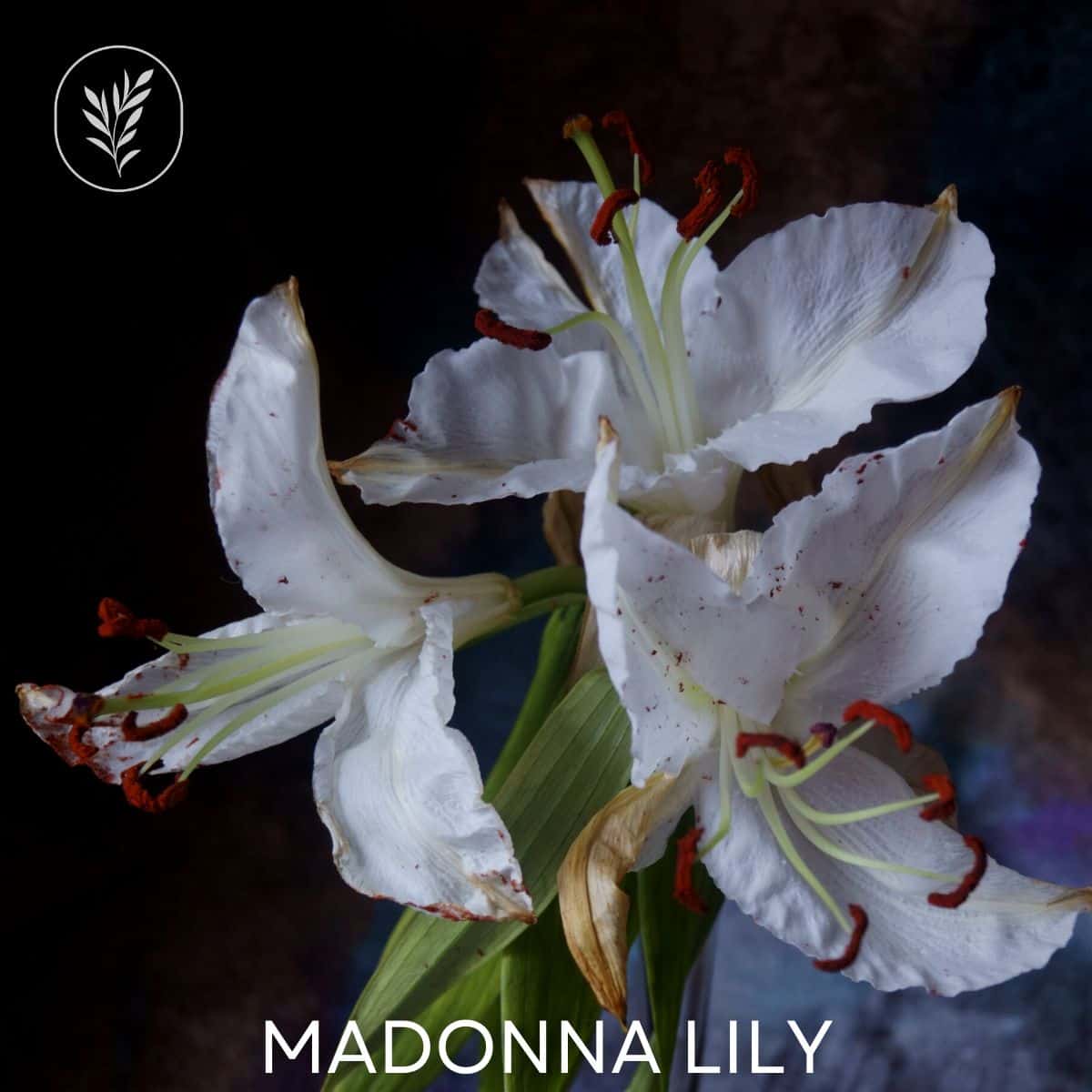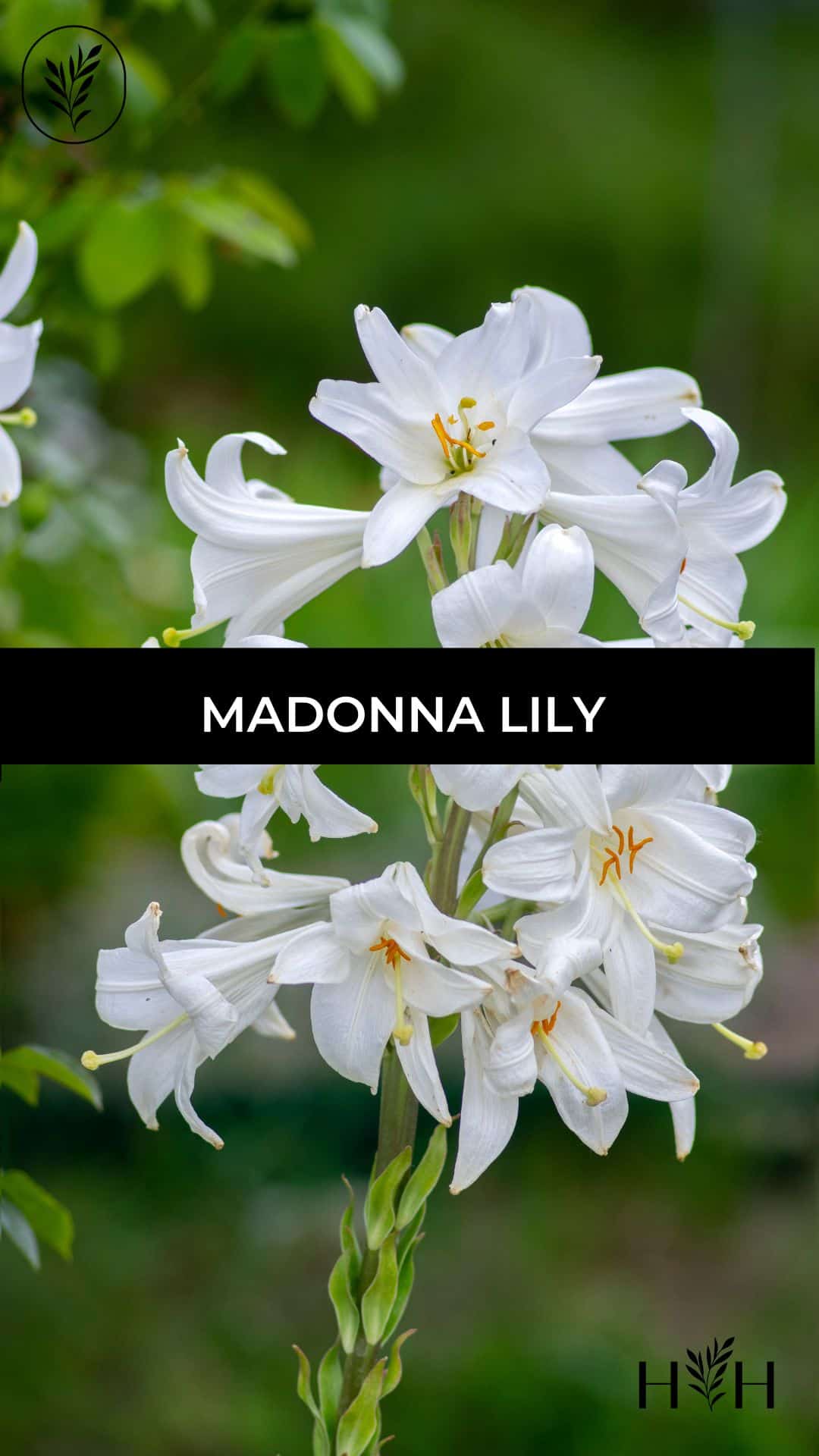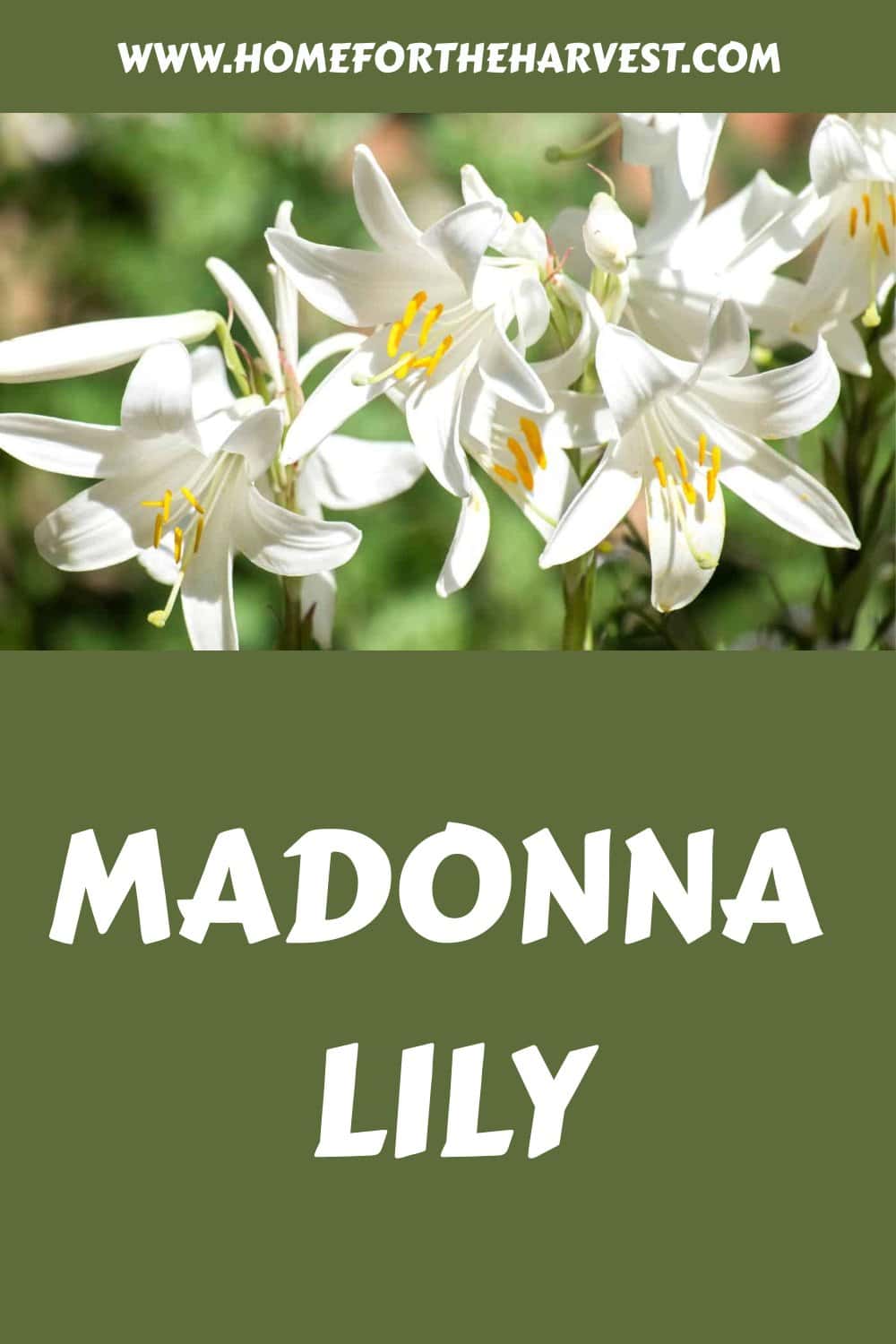If you’re looking for a beautiful and easy-to-care plant to add some brightness to your garden, look no further than the Madonna lily. This stunning species of Lilium candidum is native to parts of Europe and the Middle East but can be grown in many temperate climates around the world.
Madonna lily (Lilium candidum) is a popular flowering bulbous perennial plant known for its pure white flowers that bloom in early summer. Cultivated for millennia, this species of lily is highly fragrant and attracts pollinators such as bees, butterflies, and hummingbirds. The blooms make excellent cut flowers that will last up to two weeks when properly cared for.
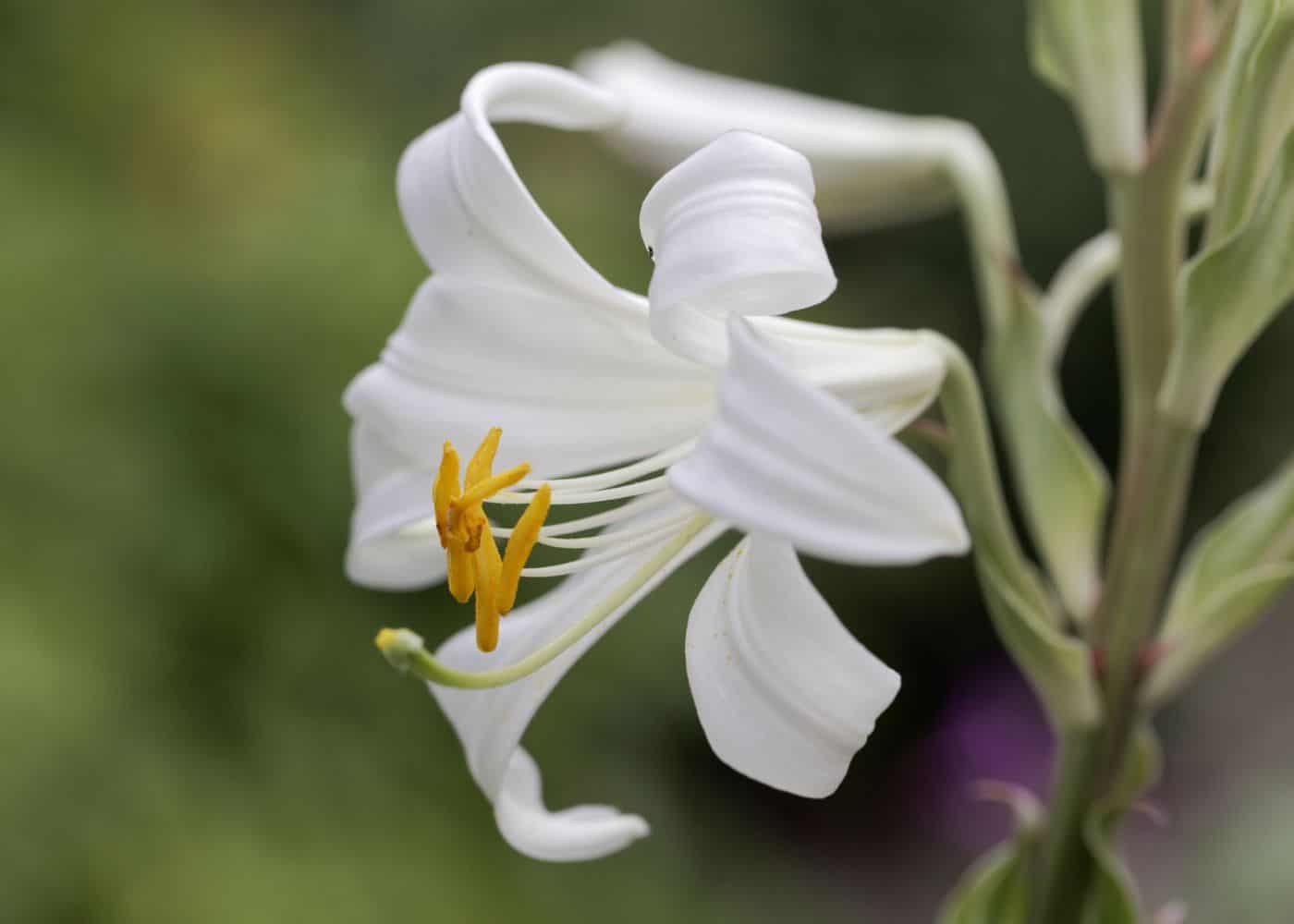
Madonna lily basics
The Madonna lily is a beautiful flowering plant native to the Mediterranean. It has large, white trumpet-shaped flowers with yellow anthers and can reach heights of up to 4-6 feet tall. This lily prefers full sun and well-drained soil, making it ideal for growing in sunny gardens or flower beds.
Madonna lilies can be grown as in-ground perennials in USDA Zones 6-9. These true lilies are of the species Lilium candidum, within the lily family Liliaceae. Madonna lilies are horticulturally classified as Division IV: Species lilies by the Royal Horticultural Society.
The Madonna lily is easy to grow but requires some patience since it takes several years before the plants bloom fully. When planting from bulbs, be sure to space them at least 6 inches apart so they have enough room to spread out over time. Once planted, keep the soil consistently moist but not soggy by watering regularly during dry spells or periods of drought.
In addition to its attractive blooms and pleasant fragrance, this lily is also low maintenance compared with other types that require more frequent care throughout the season (deadheading spent blooms or staking taller stems). Furthermore, it’s relatively pest-resistant, which makes it even easier for gardeners who don’t want extra work caring for their plants.
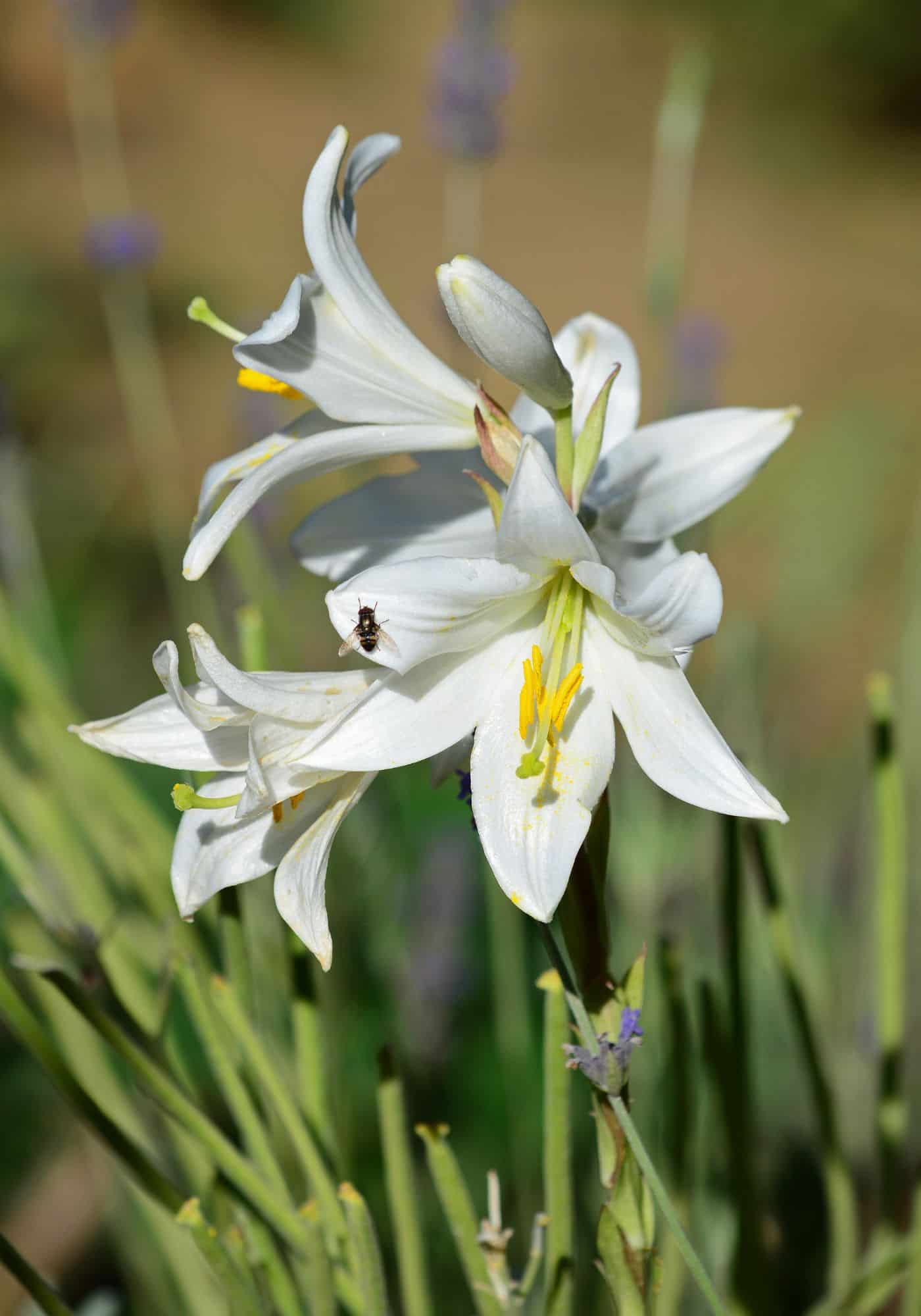
Planting Madonna lily plants
Take your time to choose an ideal location for your plants where they can thrive for many years. It is worth putting in the time now for lower maintenance requirements later on.
Choosing a planting location
When choosing a location for your Madonna lily plants, look for an area that receives at least six hours of direct sunlight each day. The soil should be well-draining and slightly acidic, with a pH between 6.0 and 7.5. If the soil is too alkaline, you can add some sulfur to lower the pH level. Additionally, make sure there are no trees or other large plants nearby that could shade out your lilies during peak growing season.
How to plant Madonna lily bulbs
Once you have chosen the perfect spot for your Madonna lilies, it’s time to get planting. The bulbs don’t need to be planted very deep – about an inch will do, but keep a minimum of 6-8 inches between bulbs. This will give each plant plenty of room to spread its roots without overcrowding them.
Place each bulb into its own hole with the pointed end facing up before filling in around it with soil until all bulbs are planted securely in their new home. Water thoroughly after planting to help settle any air pockets in the soil and provide moisture for root growth.
Mulching & fertilizing
Mulch is an important part of caring for Madonna lilies as it helps keep weeds away while also retaining moisture near the roots so they don’t dry out during hot summer days when rainfall may be scarce or nonexistent.
Spread a layer of mulch about 2 inches thick over the top of where you planted your bulbs once they have been watered thoroughly after planting; this will help protect them from extreme temperatures as well as conserve water loss due to evaporation throughout the growing season ahead. Fertilize twice per year (spring and fall) using a balanced fertilizer specifically formulated for flowering bulbs.
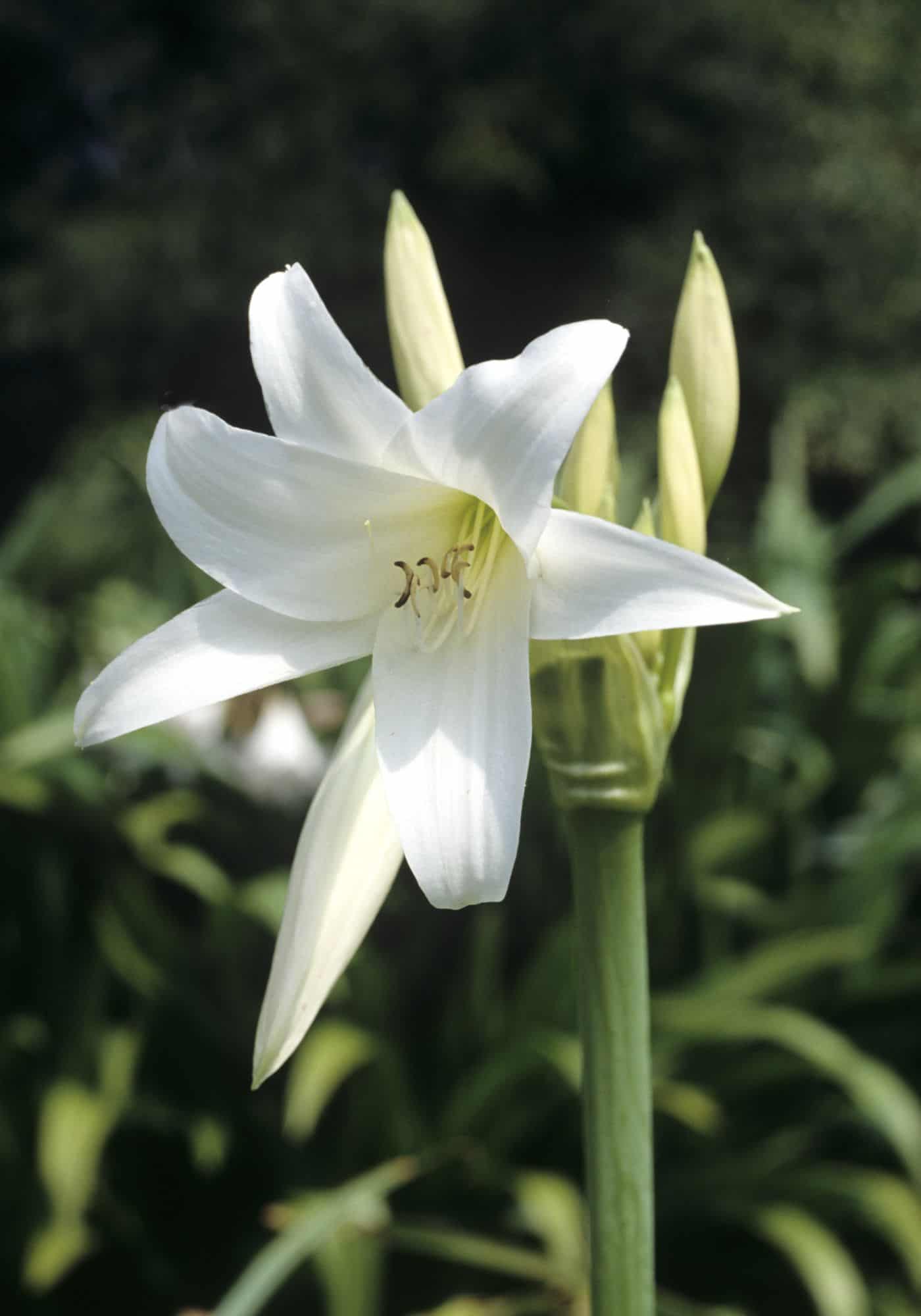
Plant care for Madonna lilies
The most important plant care item for Madonna lilies is watering, but you can also fertilize them and trim back faded flowers and foliage to keep them looking their best.
Watering
Madonna lilies need regular watering during their growing season from spring through summer until they go dormant in late fall or early winter. The amount of water needed will depend on your climate but generally, you should water deeply about once per week when there is no rain for several days at a time.
If you live in an arid region, you may need to water more often than this during hot weather months. Don’t over-water your plants as this can cause them to rot or become diseased due to fungal growths on their leaves or stems caused by too much moisture being present for extended periods.
Fertilizing
Madonna lilies benefit from fertilization once every two weeks using a balanced fertilizer during their active growing season. Follow label instructions carefully when applying fertilizer and avoid getting it directly onto foliage since this can burn delicate leaf tissue causing damage that could lead to death if severe enough.
Also, make sure not to apply too much fertilizer since excess nutrients can leach into nearby waterways, polluting them with toxic levels of nitrogen and phosphorus, which are harmful to aquatic life forms living there.
Pruning & deadheading
Pruning is important for keeping Madonna lily plants healthy by removing dead or damaged branches while also encouraging new growth each year when done correctly.
To prune properly, use sharp shears or scissors to cut off any dead blooms at their base near where they attach themselves onto stems, then remove any yellowed leaves that have been affected by disease organisms like fungi before they spread further throughout other parts of your plant’s structure. Additionally, lightly trimming back some branches may help promote bushier growth overall, giving your flowers fuller-looking heads come bloom time next year.
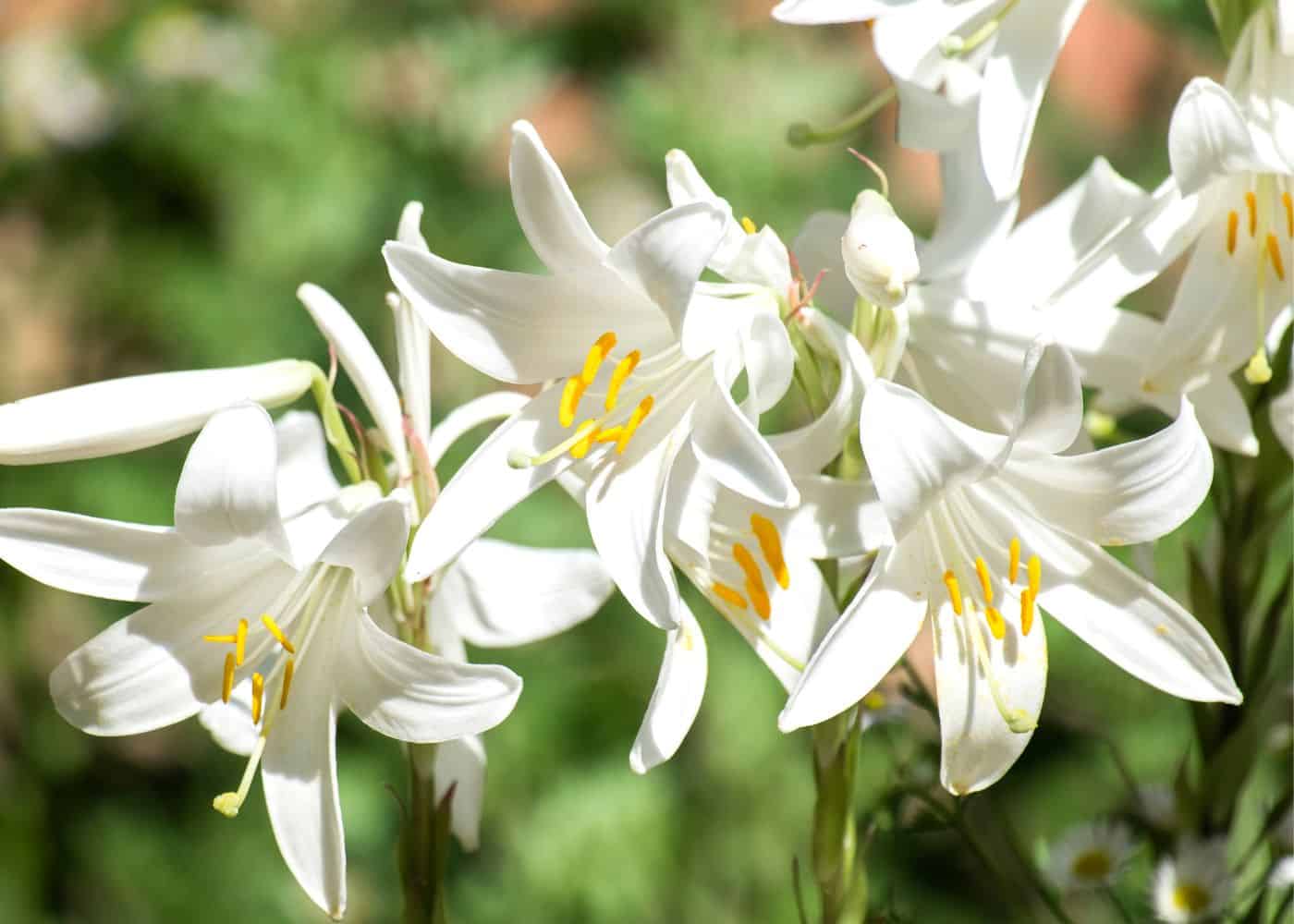
Common plant problems and how to solve them
While Madonna lilies are lovely in the garden, there are also some garden pests and diseases that also like them!
Pests
Pests can be a major problem for Madonna lilies, as they are particularly attractive to aphids and other small insects. To prevent pests from taking over your plants, it’s important to regularly inspect them for signs of infestation.
If you do find any pests on your plant, try using an organic insecticidal soap or neem oil spray to get rid of them. You may also want to consider planting companion plants such as marigolds or nasturtiums around the base of the Madonna lily which can help repel some common garden pests.
Diseases
Madonna lilies are susceptible to several fungal diseases, including botrytis blight and rust. These diseases can cause discoloration and wilt in the leaves and flowers of the plant, so it’s important to take preventive measures if you want your plants to stay healthy.
Make sure to water at ground level rather than overhead and avoid getting water on the foliage when possible; this will help reduce moisture levels on the leaves, which is essential for preventing disease development. Additionally, make sure that there is adequate air circulation around your plants by spacing them out properly in their growing area – this will also help keep fungal infections at bay.
Propagation tips
Propagating a Madonna Lily is an easy and rewarding task. It can be done either from seed or by dividing the bulbs. Propagation by division is the most common method. If a virus infects the plants, seed propagation is preferred.
The best time to propagate a Madonna Lily is in late summer when the foliage has died back, and the bulb has had some time to rest. This will ensure that your new plants have enough energy for successful growth.
Division involves carefully digging around established clumps and then dividing into smaller sections containing both roots, leaves, and stems before replanting each section separately. Make sure you water these new divisions generously until they become established again.
Garden design ideas with Madonna lilies
Madonna lilies are incredibly versatile in the garden. Here are some ideas to get you started.
Color combinations
Madonna lilies are a great way to add brightness and texture to your garden. The white petals of the flower contrast nicely with other bright colors, such as reds, oranges, yellows, and pinks. Alternatively, if you are looking for an all-white moon garden, combine them with a few other white lily varieties (such as the ever-popular Casablanca lily).
Try combining them with other flowers like roses or daisies for a beautiful look that will bring life to any outdoor space. You can also use different varieties of Madonna lily plants in order to create an interesting mix of colors in your garden.
Planting containers
If you don’t have much room in your yard for gardening, consider planting Madonna lilies in containers instead. This is a great way to enjoy these lovely flowers without taking up too much space.
Choose a container that is large enough for the roots of the plant but not so big that it overwhelms the rest of your garden design. Make sure you choose one with good drainage holes so excess water doesn’t stay around and cause root rot or disease problems later on down the line.
Borders & accents
Madonna lilies make excellent borders and accents for gardens because they provide height without overwhelming smaller plants nearby. Use them along walkways or near entryways as an eye-catching accent piece that will draw attention from visitors passing by. They also look great when planted alongside shrubs or trees as part of larger landscaping designs – just be sure not to overcrowd them if you want each individual plant to thrive properly over time.
FAQs about the Madonna lily
What do Madonna lilies symbolize?
Madonna lilies symbolize purity, innocence, and motherhood. They are often associated with the Virgin Mary and represent spiritual devotion, faithfulness, and humility. The white petals of the Madonna lily also signify peace, hope, and life-giving energy.
In addition to these religious connotations, they are also seen as a sign of fertility in some cultures due to their abundance of seeds. As such, they can be used as symbols for new beginnings or rebirths in many contexts.
Is Madonna lily the same as Easter lily?
No, Madonna lily and Easter lily are not the same. They are different species of true lilies, although they both have white flowers.
The Madonna lily (Lilium candidum) is native to the Mediterranean, in the area of Macedonia to Turkey. On the other hand, the Easter lily (Lilium longiflorum) is native to East Asia, from Japan to the Philippines.
What does Madonna lily smell like?
The Madonna lily is a fragrant flower that has a sweet, spicy floral scent. It has notes of honey and jasmine with hints of citrus and rose. The aroma is delicate yet powerful, making it one of the most beloved flowers in gardens around the world.
Its scent can linger for hours after being cut or picked from its stem, providing an enchanting experience to those who come across it. The Madonna lily is a beautiful flower that can add a unique and special touch to any garden.
Are Madonna lilies perennials?
Yes, Madonna lilies are perennials. The plants come back every year when grown in appropriate conditions. They prefer full sun and well-drained soil but will tolerate some shade as long as they get enough moisture. With proper care, Madonna lilies can be enjoyed year after year in your garden.
Before you go…
With their delicate white petals, these plants will add an elegant touch to your outdoor space. Whether you choose to plant them in beds or containers, or propagate them from bulbs or seeds, Madonna lilies are sure to make a stunning statement in your garden!


